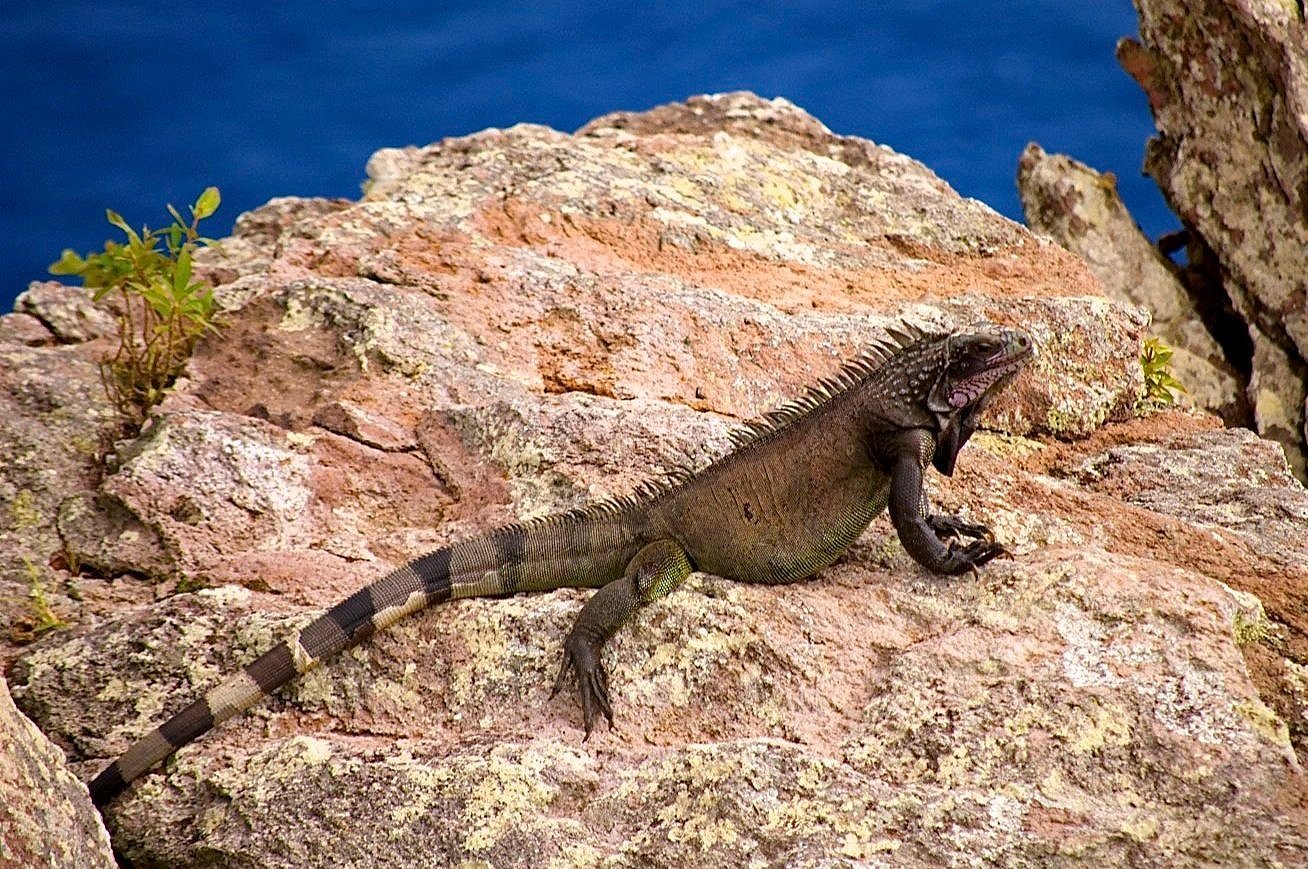On Land: Reptiles
Saban black iguana
Iguana iguana melanoderma
Jumplinks:
About
Despite their name, Saban black iguanas aren’t completely uni-colored — they boast a range of hues, from gray to brown to dark green (sometimes all on one individual), and juvenile Saban black iguanas actually begin as bright green before developing their darker coloring. Experts aren’t certain why this color variation exists; while it's thought that black reptiles elsewhere in the world likely evolved darker colors to help them absorb more light and warmth in cold climates, it remains an open question for this population.
These unique iguanas are thought by many to be endemic to Saba and Montserrat, but experts are still debating whether the Saban black iguana is actually a species of its own, or a subspecies of the widespread green iguana. Regardless of its status, Saban black iguanas face threats from free-roaming feral goats and cats, and risk being lost as a unique population through hybridization with invasive iguana species. In 2022, however, estimates put their population size on Saba at around 6,000 — more than originally thought by scientists, sparking hope for these reptiles’ long-term presence.
Header image by Kai Wulf.
This species is:
Possibly endemic
Why that matters:
Endemic species aren’t just native, they’re species found nowhere else in the world — and high rates of endemism are part of what make islands like Saba so special. In fact, islands hold the greatest concentration of biodiversity on Earth. And when we consider that 75% of all recent bird, reptile, amphibian, and mammal extinctions on our planet have happened on islands, the need to better protect these incredible places is clear.
Saban black iguanas can grow to be up to 1 m/3 feet long! That creates plenty of surface area for basking in the sun, as demonstrated by this individual. Credit: Kai Wulf.
iNaturalist Observations
Where locals, researchers, and visitors have seen this species.
Google / Imagery © 2023 CNES / Airbus, Landsat / Copernicus, Maxar Technologies, U.S. Geological Survey, iNaturalist Map data @2023
This map shows geotagged observations of this species made on iNaturalist, the world’s largest community-science platform.
iNat depends on people like you. By uploading photos of species you see in the wild, you can easily learn more about them — while also contributing critical data used by scientists and conservation-managers around the globe.
See something odd?
Observations of land species in water:
Connectivity can affect how accurate location services are, and in the case of endangered species, location is often automatically obscured.Missing observations:
Your help is needed to collect more data for this species!
Ask a Scientist
Question: Can iguanas really see with their "third eye"?
Answer: Technically, yes — the white spot you can see on the top of an iguana's head is called a “parietal eye,” and is sensitive to light. Unlike regular eyes, the light detected by the parietal eye isn't used to form images; instead, it helps iguanas set their circadian rhythm and detect movement overhead, like predatory birds.
Dr. Rayna Bell
Curator of Herpetology and Islands 2030 Co-Director, California Academy of Sciences
Related Content
Scorpion
On Land: Arachnids
Green sea turtle
In the Water: Reptiles









